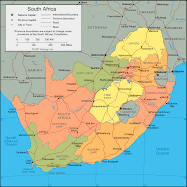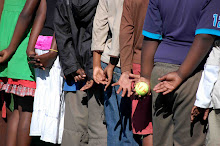
The issues and events that lead up to sexual behavior, especially sexual behavior of the highest risk, are so complex and so intimate that attempts to significantly influence this behavior seem wholly daunting—on some days, futile. Across the world, we all act in ways we know we shouldn’t. Education and awareness are powerful, but so are a variety of other factors that push people of all ages in the opposite direction. How do we tip the scale? What makes GRS different?
For years billions of dollars and resources have been poured into HIV/AIDS prevention and care programs, and while these efforts have seen some success, the statistics remain shocking. What’s done is done, but the results haven’t been good enough, and mediocrity shouldn’t be emulated. I think GRS has recognized this, and its constant determination to improve its curriculum and develop new angles to reach the kids is really encouraging to me. Even if it’s not quite there yet, I truly believe that GRS is well on its way to implementing a new, innovative, and remarkably promising approach to HIV and AIDS prevention.
It’s fascinating to watch “interventions,” as they’re called, or the primary mode of delivery of Grassroot Soccer’s core curriculum. This curriculum is comprehensive and uniquely streamlined, and GRS devotes a great deal of resources to the development of coaches and their ability to deliver this curriculum in an accurate and engaging manner. Throughout the eight sessions, kids participate in a program that integrates soccer and basic HIV/AIDS information, along with such themes as self-esteem building and the development of a sense of self-efficacy. Learning is activity-based, and GRS coaches act as positive older role models for the kids. Of course, this is all in theory. Practice is something different and it can always be improved. From what I’ve observed, interventions vary a lot from site to site and day to day. Most I’ve watched are definitely less effective and seamless as Grassroot Soccer markets. Even in my short time with GRS, however, I have seen an exception—an extraordinarily inspiring exception.
Samito is a short, slight man with long dread-locked hair and a bright and boyish grin. He’s likeable from the moment you meet him; he’s genuine, friendly and charismatic at once. On my first day, rather my first hour, in Mangaung, the major township outside of Bloemfontein, I watched Samito and an assistant female coach, Kamo, lead an outstanding GRS session. Samito’s delivery of the curriculum was textbook, or it would be if such a textbook existed. But more importantly, and unlike the other interventions I’d seen, this session quite obviously captivated the students. Or perhaps more accurately, Samito captivated the students. Samito captivated me. He seems like he was born to be a teacher—to interact with and reach out to kids. I’m realizing more and more every day what a truly exceptional gift that is. Teaching is an art, and a passion, and Samito excels at both. That session stands out to me as proof of the possibility of excellence in the Grassroot Soccer world.
Beyond these success stories, “GRS in theory” promises even more avenues for real progress in the realm of HIV and AIDS prevention. It is increasingly accepted that behavior change involves more than strictly education and awareness. And it involves even more than positive older role models, especially if such role models can’t play the ideal long-term role in a child’s life. To have a shot at cutting to the core of sexual behavior, GRS and other prevention-focused efforts will have to move up to reach people through a community level, or a cultural level. And I believe that this is what GRS has done, or is in the process of doing now. The creation of a “Skillz” culture that will allow the messages of GRS to permeate throughout a community is an overarching goal that promises greater sustainability and influence of the original GRS-student interface. Street soccer leagues are one component of this new strategy; they are intended to further develop and reinforce the unique “Skillz” culture, while simultaneously creating a safe space for youth, especially girls, to participate in sports. GRS has also allied itself with a major African broadcasting company to continue to reach people at levels beyond the initial interventions. In a similar vein, GRS has developed a curriculum-based, extremely marketable magazine to reiterate its key messages and further capitalize on the enormous appeal of soccer and soccer stars in South Africa.
Altogether, these varying angles and methods of reaching out to people seem to be well researched and uniquely entrepreneurial, which I find promising. The logic behind a more community-based approach to HIV/AIDS prevention makes sense. And the necessity of a more business-like strategy—complete with various marketing, accountability, and oversight components—seems undeniable. I’m thoroughly grateful to have the opportunity to participate in this new and ever-improving GRS vision.















No comments:
Post a Comment